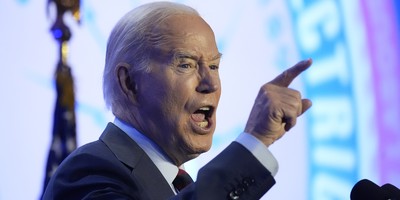Mumbai, India -- When I told friends I would be visiting India, the immediate response was, “Why? China’s the country of the future!” Well, I’ve visited China many times. It was time to meet some of the business, academic and governmental leaders of the world’s “biggest democracy,” as India bills itself.
India is large, almost beyond imagination. Its three largest cities, Mumbai, Calcutta and Delhi, dwarf New York, Los Angeles and Houston. More people (more than 42 million) live in those three cities than in the two dozen largest U.S. cities combined.
Every number in India seems staggering. More than 100,000 new engineers, for example, graduate from its educational system every year, and there are 120,000 Indian students studying in the United States. For India to meet its own internal needs for college graduates, it will need to establish scores of new colleges and universities over the next decade.
By 2020, India’s total population is expected to exceed China’s, making it the world’s most populous nation. It’s a land on the march. In the early 1990s it launched critical economic reforms, and subsequent governments have endorsed those reforms, speeding their country into the modern era.
As The Heritage Foundation’s “Index of Economic Freedom” shows each year, more economic freedom (an open economy operating under the rule of law), generates more economic growth. That, in turn, means a higher income for the average person. This is exactly what’s happening in India.
No, I wasn’t dazzled by the high-tech centers of Hyderabad and Bangalore, because I didn’t have time to even visit them. But I did hear from private bankers, business leaders, educators and government officials. Their universal commitment to pushing reforms and investing further in the Indian economic miracle impressed me. For half a dozen years now, India has had a 7 percent to 9 percent real economic growth rate.
Recommended
Yes, India continues to face daunting challenges. Almost half the population still relies on subsistence farming for its livelihood. Grinding poverty still afflicts the majority of its citizens. The caste system remains. But plenty of articulate, able and principled Parliamentarians are shaking up the system.
India is a better place to do business than China, according to U.S. Ambassador David Milford. It’s true that the notorious Indian bureaucracy remains a stumbling block. But continuing reforms and the rule of written law is making the country more business friendly and supportive of individual rights.
Those are just a few reasons why the United States is now India’s largest trading partner ($42 billion last year alone) and the largest foreign investor in India. Meanwhile, Indian firms are now becoming worldwide companies. The Tata Group, planning to produce a mass-market car to sell at $2,500, also bought the Land Rover and Jaguar automobile lines from Ford. It has recently invested several billion dollars in major manufacturing projects in the United States.
And Tata has also opened up two “call centers” in Ohio and Florida. That’s right -- an Indian firm is hiring Americans to man the phones.
India still has a long way to go. Its educational system needs greater input from international colleges and universities, but that’s illegal. And the financial structure is monopolistic and non-competitive. Still other reforms are required across the board. Hopefully, pending bills before Parliament will lead to reform in all of these critical areas.
After a week in India, I can claim only a superficial set of impressions about this complex society, and the important bilateral relationship between the U.S. and India. But it’s enough to convince me that if India continues on its reform path, it will become a very important player on the international scene, and a vital advocate for freedom around the globe.

























Join the conversation as a VIP Member